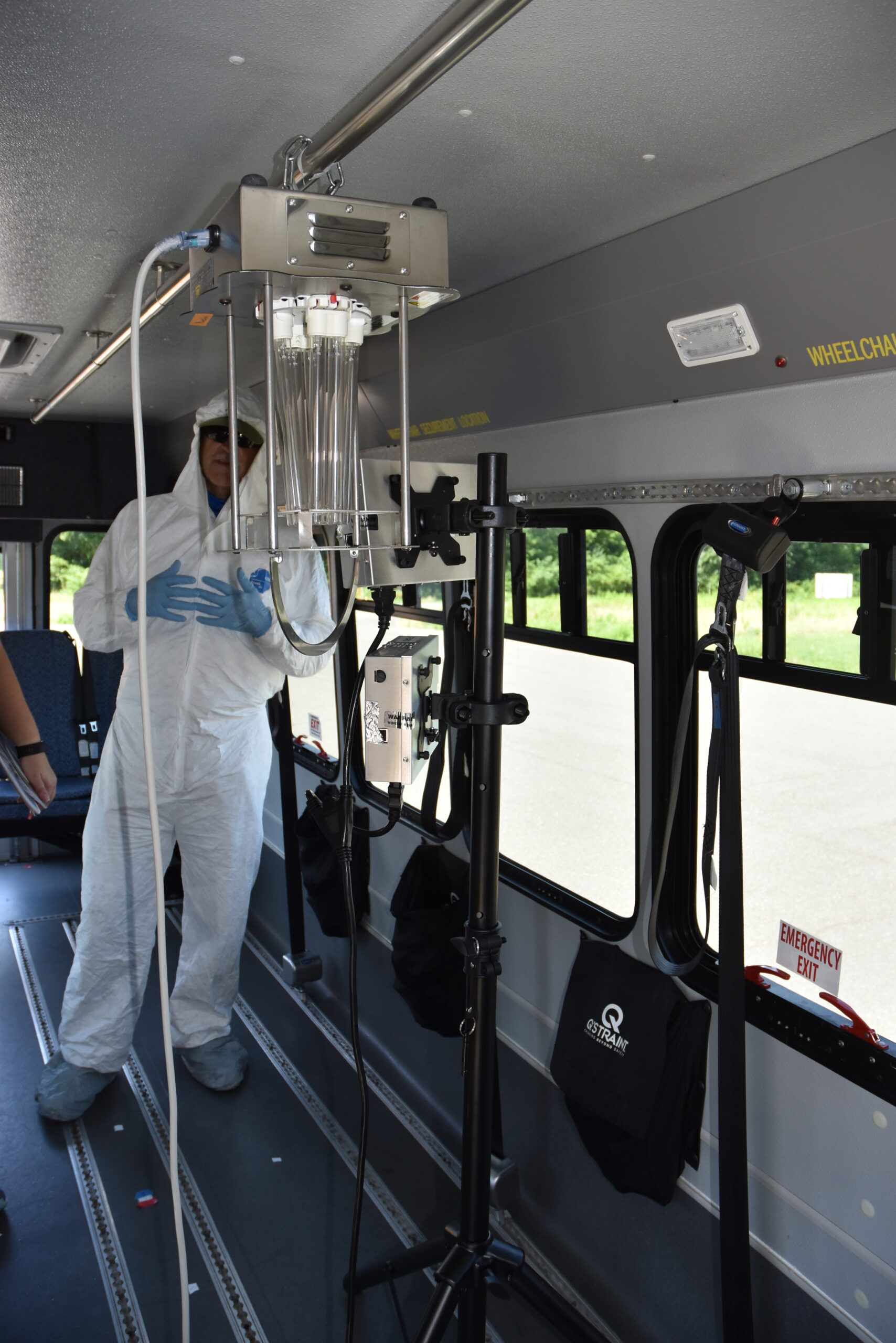EOHSI and CAIT Research Project: Ultraviolet (UV) and other Disinfection Devices for Public Transit in Response to COVID-19

Watch Video
Research project by the Center for Advanced Infrastructure and Trasportation (CAIT) and the Environmental and Occupational Health Sciences Institute (EOHSI)
This project was designed as a rapid effort to evaluate ultraviolet (UV) disinfection technologies with a specific emphasis on UVC (ultraviolet germicidal wavelength) efficacy and practicality for surface disinfection of bus interiors. With more than 3,700 vehicles in NJ TRANSIT’s fleet, the deployment of any new technology must be carefully weighed against alternatives to ensure it achieves the desired results.
The study LiDAR surveyed six vehicle types and developed virtual environment 3-D models for a NABI 40-ft bus and a mini-bus used for paratransit. Using the operational constraints, these models were used to run simulations to determine UVC source placement. The model showed for the 40-ft bus that 65.61% and for the mini-bus that 70.88% of visible surfaces would receive a direct line of sight dosage. Field testing was then conducted using UVC sources and a spectrometer. All but three (3) mini-bus and six (6) measured NABI locations received dosages in excess of the established threshold required to achieve a 10.6 mJ/cm2 kill dosage. However, even these locations still received some level of irradiation. This confirmed the simulation results and implies that the true percentage of the bus receiving a kill dosage is much higher than the model prediction, which could not predict reflected light. However, any gap in coverage of a critical or high touch surfaces like a wheelchair seatbelt raises overall efficacy concerns for UVC disinfection of surfaces.
Although UVC for disinfection is highly effective there are a number pragmatic considerations too. In comparison to chemical disinfection via spray and air-dry procedures, using a portable UVC source does not appear to save labor time or cost. Ultimately, in comparison to the simplicity and speed of spraying an EPA List N approved chemical disinfectant, the time and logistics of UVC may not be practical for fleet wide deployment.
The research team also reviewed available literature concerning HVAC systems and their ability to remove virus particles from the air. If performance permits, the HVAC should be upgraded to MERV 13 or better filter, or the highest compatible filter, at a minimum MERV 8. For in-duct ion and photocatalytic oxidation systems, the research team has health and efficacy concerns. Similarly, due to the rapid air exchanges within the bus HVAC system, the low UVC exposure time of air in-duct UVC devices, it is unclear if they achieve the full kill dosage required. However, repeated in-duct UVC exposure may result in a net cumulative dosage that weakens or possibly kills some unknown percentage of virus.
Copyright © 2021, Rutgers, The State University of New Jersey

